
GREEN
The green has a medium wavelength and frequency, the impulse transmitted by this color excites and inhibits in approximately equal proportions some areas in the limbic system. Therefore, this is the color of emotional harmony and cognitive balance.
By stimulating the green cone cells, the nervous impulse reaches the centers on the calcarine sulcus and the nervous connections reach the temporal lobe, especially the antero-basal and medial segments, these being essential in adapting emotional states to the factors that trigger it. Cortical adaptation is translated into emotional balance with influences on the behavior. Higgins et al. have determined that the stimulation of temporal lobe determines the activation of states of optimism, joy, affection (Higgins, col., 1956).
The neuronal circuits triggered by the green impulse also reach the parietal lobe where the emotional states are connected with the cognitive ones and the connection with the posterior frontal lobe determines the sense of the behavior. The balanced emotion, filled with optimism, will determine balanced cognitions, pertinent judgments and consequently the conduct is adapted to the environment, balanced.
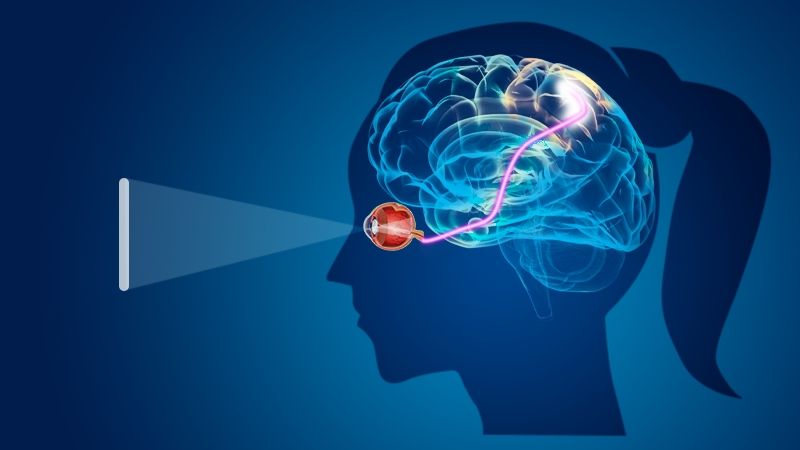
Fig. 19 Green – cortical projection
If you choose to wear green, this shows that you are crossing a balanced time from all points of view or that you are aiming for balance. A balanced person is altruistic, optimistic, benevolent, open and confident in himself/herself and others. It is good if you are like that and the green on you reflects this. But it is just as good if you are inclined towards these states and consciously choose to wear green.
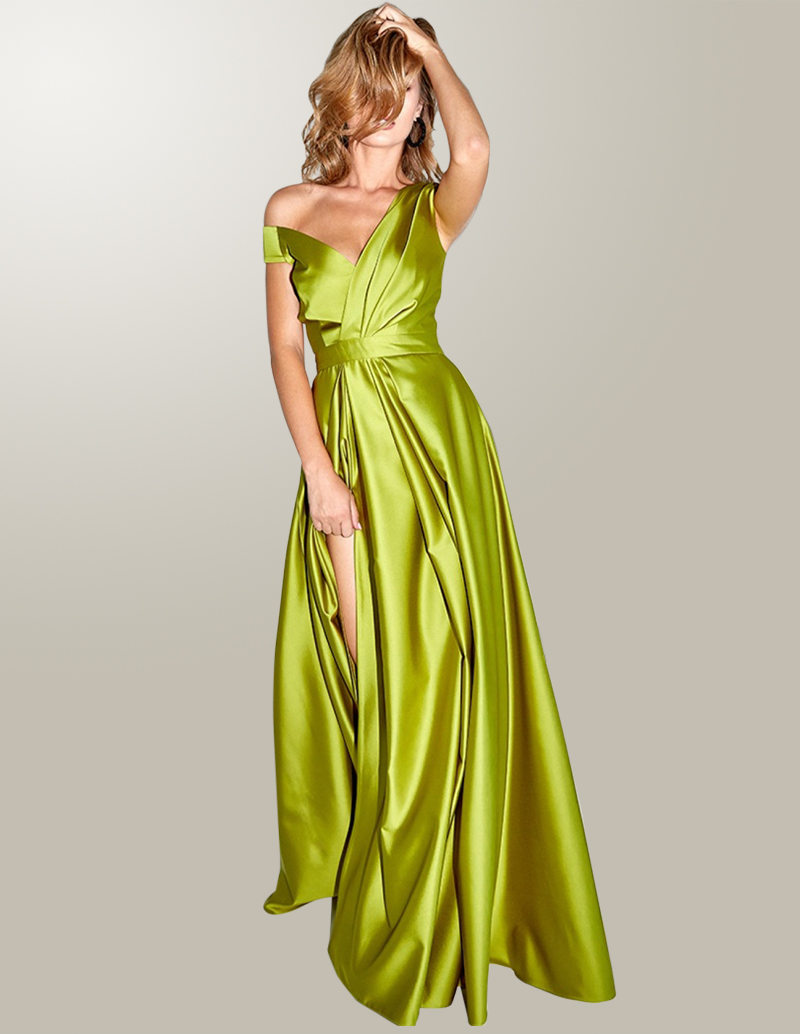
Fig. 20 Example of outfit
If the person in front of you is dressed in green, keep it close, especially if (s)he does this quite often! It's the one who can help you reach balance. It is the person who will not deceive you, who will not harm you, who will not try to take advantage of you, to dominate you. Moreover, it is the person next to whom you can grow, you can evolve, because (s)he has everything (s)he needs to succeed and (s)he will pull you up by his/her altruism. It's an emotional stabilizer that can calm down your anxieties and doubts, but it's also a rational one that can chase away your fears. Pay attention! If (s)he rarely uses the green color, (s)he can be a skillful manipulator who wants to disarm you, displaying a false sense of security.
Also, if you are on the edge, feel depressed or very sad, experience disturbing moral dilemmas, acute cognitive problems, you need to make a sustained effort to accept the balanced person. His/her well-being can irritate you, having the impression that (s)he does not empathize with you, (s)he does not understand you. Give yourself a break, get over the initial state of irritation and you will see that the other is the healer of your states, doing nothing but being himself/herself.
When should you wear green?
Obviously, when you want to reach emotional balance. Do not do this occasionally, but rather frequently and gradually the effects will become visible. This is a medicine for the emotional sphere; it is administered gradually and has long-lasting effects.
You wear green when you want to be accepted by the others. Most will be fascinated by the unconscious message transmitted by green and they will accept you as a stabilizing factor. Those who will not accept you are not ready for you. Decide on a case-by-case basis if they are worth investing in.
You’ll wear green when you need to convince. You cannot make anyone believe in you, in your ideas, in your actions unless you show emotional stability, cognitive balance. Any slip can be interpreted by the other as a threat to his or her comfort and (s)he will reject you.
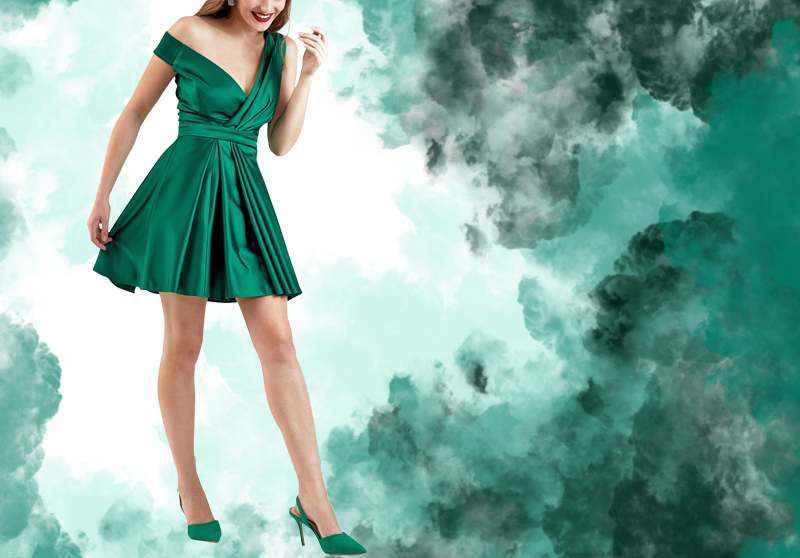
Fig. 21 Example of outfit
When should you not wear green?
Do not wear green when you want to penalize someone, to correct a behavior, when you want to impose yourself, even dominate. You will not be considered a credible person or a person strong enough to accomplish all of this and you will be rejected. Do not dress up in green when you want to ask for a promotion or raise, when you want to impose a rule in your relationship or marriage. Usually, these situations call for radical measures and a balanced person cannot be radical, hence the lack of credibility in the eyes of the other and the failure in action.
Conclusion
By understanding the intensity of the impact of pure colors on our brains and implicitly on our states and moods, we can consciously influence them, the effects becoming visible in all our actions and relationships. Where the conscious mind can dominate the subconscious, it is our duty to inform and take control of our own being.
3. Pure colors and influence of the emotional sphere
In the previous chapter, we discovered the importance of the impact of basic colors on states, moods and emotions, the effects on all our decisions, actions and relationships. Red, blue and green, as primary colors, are not the only ones influencing our mood! The other pure monochromatic colors also bring consistently their contribution, which justifies our analysis.
The pure colors, as defined in the chromatic spectrum, are the result of combining, in varying proportions, two of the primary colors. The states, the moods they feed, have been linked to the cortical stimulation of primary colors, especially the dominant color. For example, in the red-blue combination with dominant red, the hypothalamic nuclei, lymphatic cortical circuits, cingulate gyrus, amygdala and septal areas are stimulated, however, the networks of subcortical structures are also activated, stimulated by the nerve impulse generated by the decomposition of light by blue cone cells.
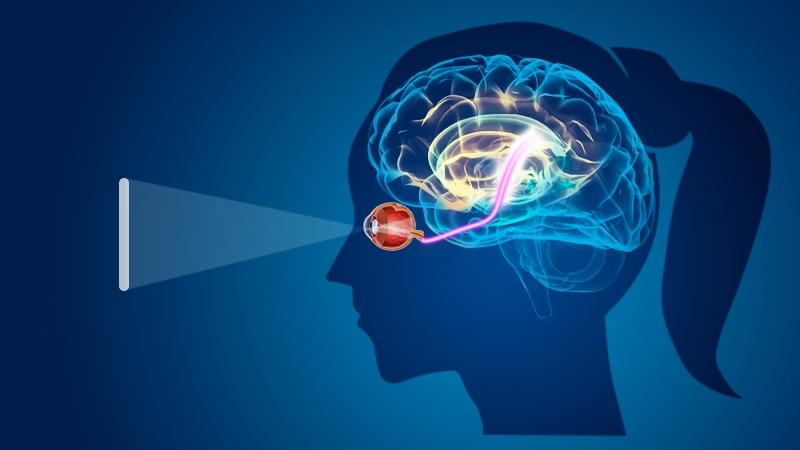
Fig. 22 Cortical projection

YELLOW
What are you thinking of when you say yellow? Wealth, heat, health? Symbolically, yellow is associated with wealth, gold is yellow, wheat is also yellow. The color of the sun makes us think of heat when we say yellow. And by association with wealth and warmth, yellow can only be the reflection of health. Beyond symbolism, these attributes associated with yellow also have a scientific explanation.
The yellow has a medium wavelength and frequency, causing both inhibition and excitation in stimulating the brain. So, it is also a color of balance, but another type of balance, different from the green one. Green being a primary color, it generates a primary, natural balance. Yellow, which approaches the wavelength and frequency of the energetic and stimulating red, conveys a higher balance.
Why is it higher!? Because it is built by work. You build wealth if you work for it, you get the heat if you deserve it. It is a balance gained from the struggle between the passionate red and the nice green. An acquired balance, for which effort has been made, is more durable, appreciated and more visible in the person's actions. Yellow becomes the messenger of higher attributes. The emotional harmony is reflected in the kindness, compassion, empathy and sympathy a person can show and cognitive balance translates into wisdom, high intelligence, intuition, imagination. What can easily break these extraordinary attributes is prudence, the balance gained sometimes acting as a brake, out of fear of being affected.
Did you choose to wear yellow?
This shows, first of all, your courage. Get out of the house and look around and you will notice few, very few people dressed in yellow. Many want to be regarded as fighters, courageous, but avoid as much as possible any struggle, any act that can capitalize on their courage. They want to be something, but reality shows something else. Yellow reflects a strong Person who is exactly what (s)he has wanted to be. (S)he does not have the foolish courage of red, but a balanced, responsible one, motivated by the best intentions. The yellow on you conveys balance, kindness, compassion, intellectual vivacity or that you are inclined towards all of these.
The person you are interacting with wears yellow? Admire their courage and follow their lead. Engage in their actions, involve them in your actions, because that's how you win an ally and success is the only finality. You will have huge satisfactions by his/her side, because all his/her actions are sprinkled with emotion, warmth, humanity.
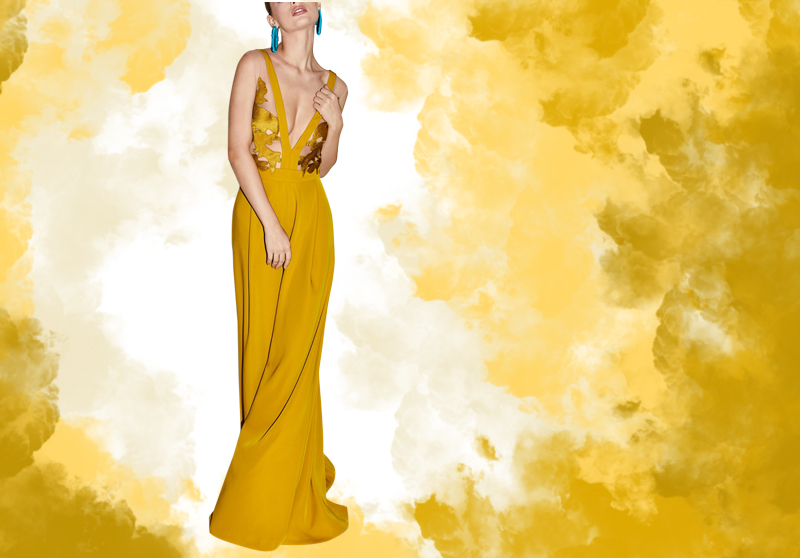
Fig. 24 Example of outfit
When to choose to wear yellow?
I recommend you to wear yellow when you want to be accepted as a friend. The heat that you emanate makes the others be open, friendly and confident in you. You also choose to wear yellow when you want to be an informal leader. The others will recognize you as a leader without you imposing this. Your courage becomes an example and they will feel obliged to follow you.
Dress up in yellow when you talk to kids. They will seek your warmth because it guarantees them the emotional safety, vital to them. The children are always looking for models and support in the adult and your yellow disarms them, makes them give up potential defense mechanisms and find in you exactly what they need.
Choose yellow when you want your uniqueness to be recognized, when you want to get out of anonymity, when you want to stay in the minds of those you are interacting with, when you want to see pleasure in the eyes of those who look at you, satisfaction in the actions of those who accompany you.
When should you not wear yellow?
You do not wear yellow when you are a formal leader. You will not be listened to, followed, because the others do not find in you the image of rationalism, the radicalism unconsciously associated with the leader.